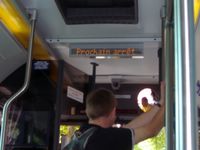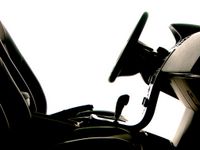Goods moved in and out of Malaysia by the following modes:
• Sea
• Air
• Rail
• Road
The ocean vessels carried the most goods. The throughputs at most of the ports were more than 90% of the estimated total volume of goods.
Seaports
The following are the major ports in Malaysia:
• The North Port, Klang, Selangor
• The West Port, Klang, Selangor
• The Port of Tanjung Pelepas, Johore
• The Johore Port, Pasir Gudang, Johore
• The Port of Penang, Penang
There are other smaller ports uses by domestic vessels namely:
• The Kuantan Port, Pahang
• The Kemaman Port, Trengganu
• The Kuching Port, Sarawak
There are also specialized ports, like one use for the export of petroleum, in Miri and Bintulu, Sarawak
Airports
Airports are important gateways of Malaysia, from both the passenger and air cargo traffic. Malaysian Airports Berhad (MAB) manages all airports in Malaysia. The Kuala Lumpur International Airport (KLIA) is the biggest in the country. It is poised to become an important hub to the South East Asian countries by the year 2005 after the implementation of the regional free trade agreement.
KLIA can handle cargos throughput of 1 million metric ton. The handlings of cargos are at the Advanced Cargo Centre (ACC). MASkargo, a subsidiary company of Malaysia Airlines, operates this centre. Many major world airlines operate regular passenger and air cargo services. They connect KLIA to other world's airports.
Other important airports in Malaysia are as follows:
• The Penang International Airport, Penang
• The Senai Airport, Johore
• The Kuching International Airport, Sarawak
• The Kota Kinabalu International Airport, Sabah
Except for Penang, the other airports act as spokes to KLIA in respect of cargo handling. Where goods are then reroute from KLIA to other world's destination.
Railways
The railways operation have extensive network in Peninsular Malaysia. In addition, a limited services in Kota Kinabalu, Sabah. The main operator is Keretapi Tanah Melayu (KTM), a government owned company. Their rail networks and services cover all major industrial centres in Peninsular Malaysia. In the Klang Valley the railways uses the electrification and double track technology. There are plans to provide such level of technology to all KTM networks in the future.
The rail services integrate well with other modes to offer Intermodal Transport Operations. From ports, goods moved to various inland terminals by rail. From then trucks are use to sent the goods to the consignee's premises. Even though the goods moved by different modes, they only use one single document.
The railways also act as Land Bridge, moving containers from vessels at various Malaysian ports to ports in Thailand. They provide considerable time saving for goods bound to the East Asian destinations.
Roads and Highways
The highways in Malaysia conformed to international standards. The North South Highway runs from Singapore in the south to Thailand in the north, about 900 km stretch. Goods from seaports & airports move easily to various urban and industrial centres by road. Normally goods are in containers from ports and airports. A point to note is that the container use by air cargo is different from the one use by sea vessels.
There are at this moment about nine major road haulage companies providing container movement services in peninsular Malaysia. Competition among them ensures cheap and efficient services.
For movement of goods, which are less than container loads, smaller trucking companies are available. They provide forwarding services with door-to-door effectiveness.
The road haulage normally moves goods around 200 km radius from the ports. For longer journeys, railways provide cheaper and safer services.








